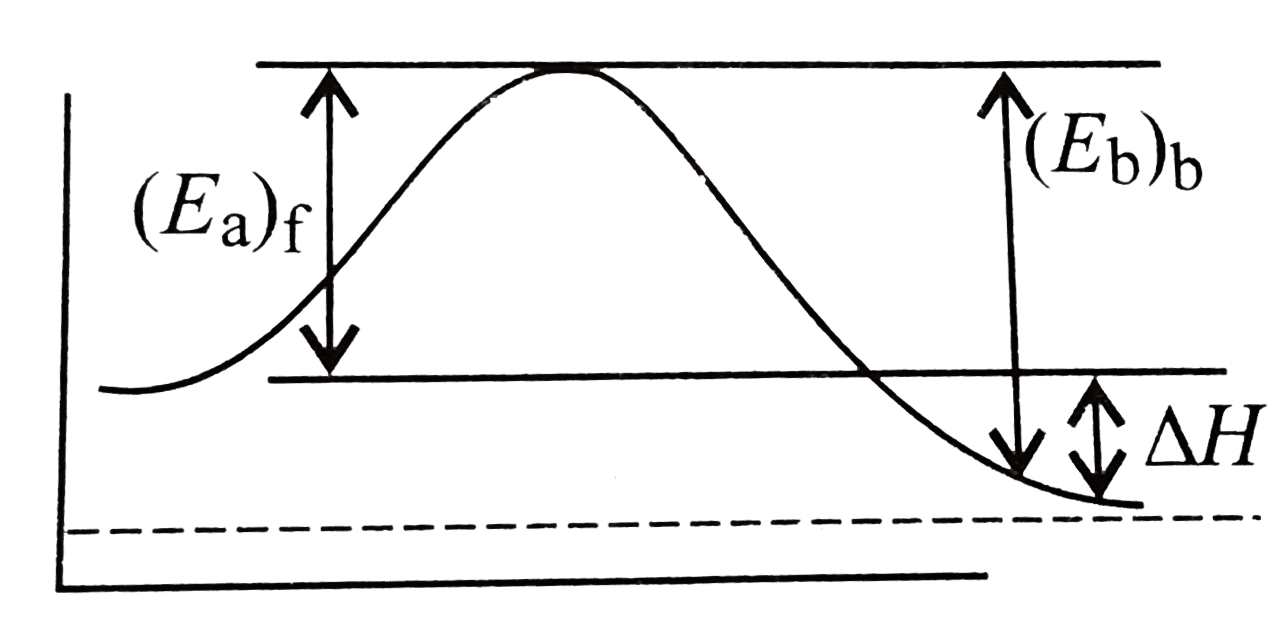For the chemical reaction X Y , the standard reaction Gibbs energy depends on temperature T (in K) as ( in kJ ) = T . The major component of the reaction mixture at T is
X if T=315 K
Y if T =300 K
Y if T =280 K
X if T =350 K
The correct Answer is:A
To determine the major component of the reaction mixture at a temperature of 350 K for the reaction X ⇌ Y, we will analyze the standard Gibbs free energy change (Δ_rG^0) given by the equation:
ΔrG0=120−38T
1. Calculate Δ_rG^0 at T = 350 K:
Substitute T = 350 K into the equation to find Δ_rG^0.
ΔrG0=120−38×350
=120−10508
=120−131.25
=−11.25 kJ/mol
2. Interpret the sign of Δ_rG^0:
Since Δ_rG^0 is negative (-11.25 kJ/mol), the reaction is spontaneous in the forward direction (from X to Y).
3. Determine the major component:
When the reaction is spontaneous in the forward direction, it indicates that the products (Y) will be favored over the reactants (X). Thus, Y will be the major component of the reaction mixture at 350 K.
4. Conclusion:
Therefore, at T = 350 K, the major component of the reaction mixture is Y.
Substitute T = 350 K into the equation to find Δ_rG^0.
Since Δ_rG^0 is negative (-11.25 kJ/mol), the reaction is spontaneous in the forward direction (from X to Y).
When the reaction is spontaneous in the forward direction, it indicates that the products (Y) will be favored over the reactants (X). Thus, Y will be the major component of the reaction mixture at 350 K.
Therefore, at T = 350 K, the major component of the reaction mixture is Y.
Similar Questions
The standard reaction Gibbs energy for a temperature T is given by
ΔrG∘=A−Bt
Where A and B are non-zero constants.
Which of the following is TRUE about this reaction ?
View SolutionFor a chemical reaction A+ B ⇔C+D(ΔrH0=80 KJ mol−1) the entropy change ΔrS0 depends on the temperature T (in K) as (ΔrS0=2T(JK−1mol−1) .
Minimum temperature at which it will become spontaneous is ___________ K. (Integer)
View Solution
Knowledge Check
Which of the following can help to predict the rate of reaction if the standard Gibb's free energy of reaction (ΔrG∘) is known ?
AEquilibrium constantBΔrH∘CΔrU∘DHeat liberated during the course of reaction in calorimeterThe activation energy for the forward reaction X→Y is 60kJmol−1 and ΔH is −20kJmol−1. The activation energy for the reverse reaction is
A80kJ mol−1B40kJ mol−1C60kJ mol−1D20kJ mol−1The activation energy for the forward reaction X→Y is 60kJmol−1 and ΔH is −20kJmol−1. The activation energy for the reverse reaction is
A80kJ mol−1B40kJ mol−1C60kJ mol−1D20kJ mol−1
The standard Gibbs energy change for the reaction
2SO2(g)+O2(g)→2SO3 (g)
is −142kJmol−1 at 300 K. Calculate equilibrium constant.
View SolutionThe activation energy for the forward reaction X→Y is 60kJmol−1 and ΔH is −20kJmol−1. The activation energy for the reverse reaction is
View SolutionIn an exothermic reaction X→Y, the activation energy is 100kJmol−1 of X. The enthalphy of the reaction is −140kJmol−1. The activation energy of the reverse reaction Y→X is

View SolutionFor a certain reaction the variation of rate constant with temperature is given by the equation
lnkt=lnk0+(ln3)t10(t≥0∘C)
The value of temperature coefficient of the reaction is
View Solutionstatement-1 : For every chemical reaction at equilibrium standard Gibbs energy of reaction is zero.
statement-2 : At constant temperature and pressure, chemical reactions are spontaneous in the direction of decreasing Gibbs energy.
View Solution
